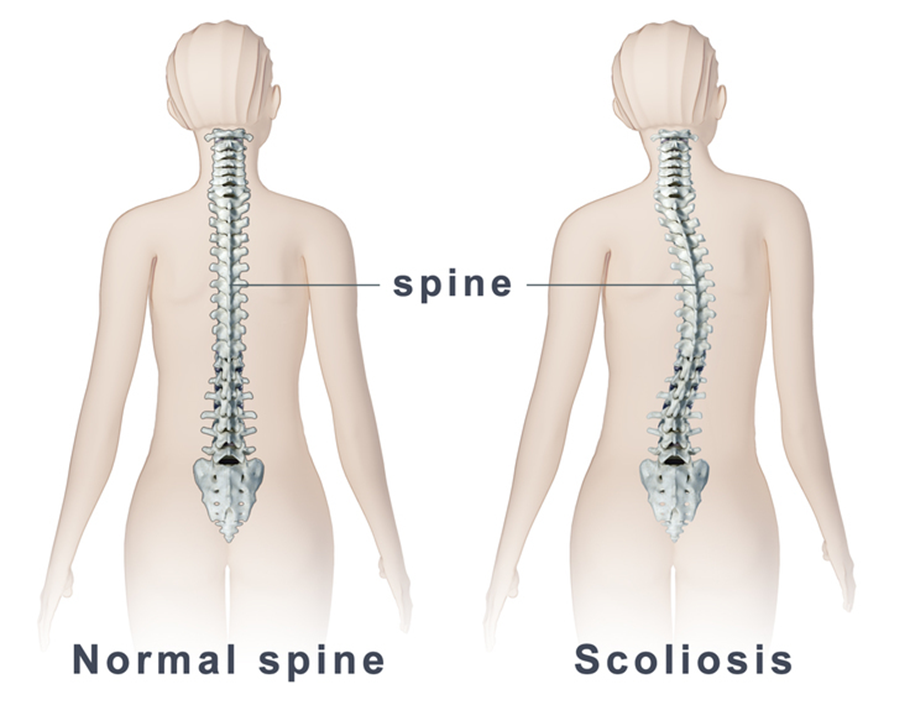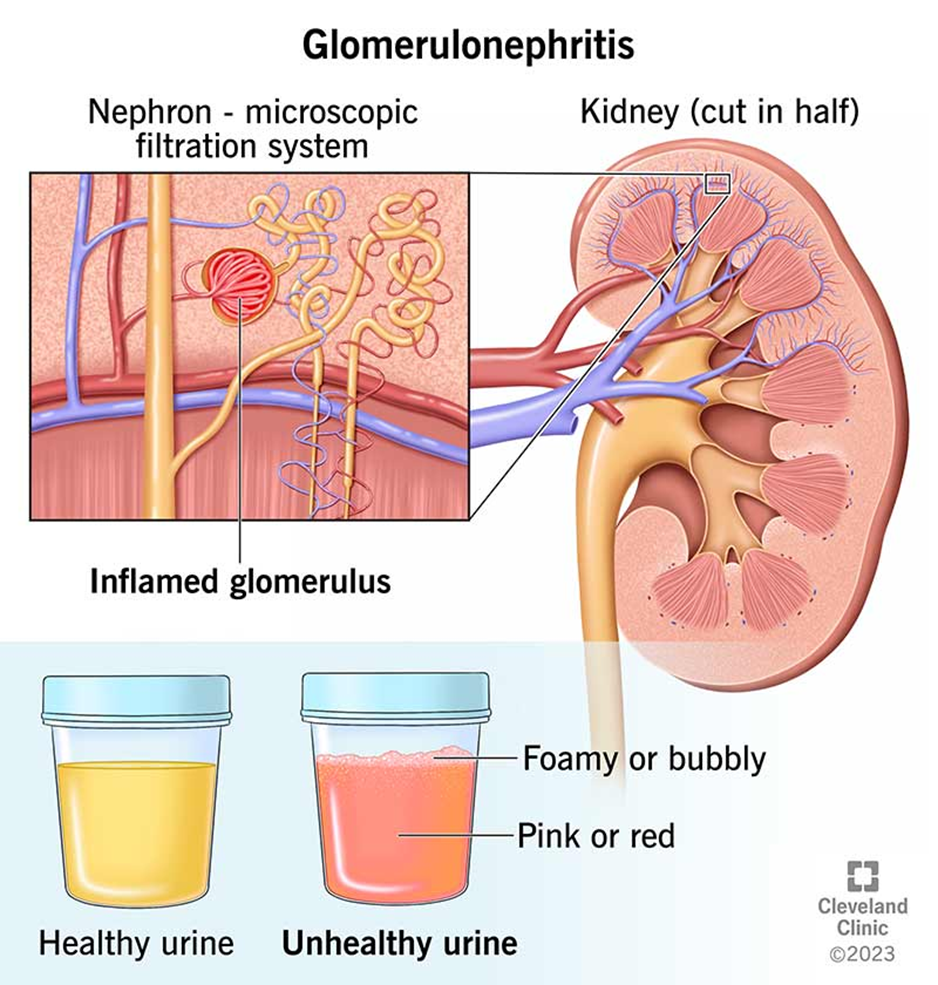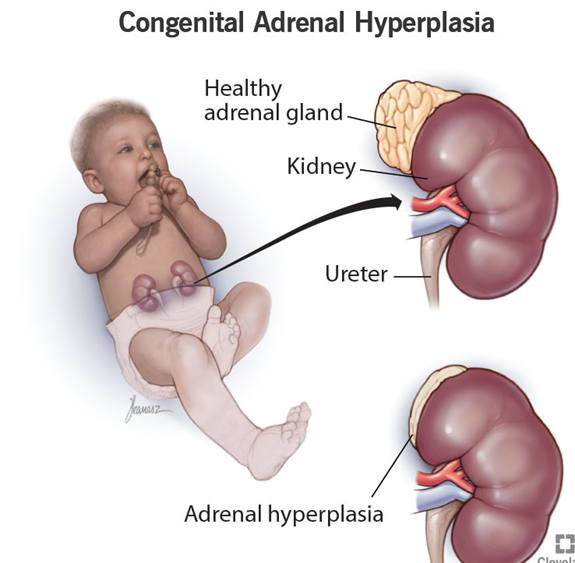A school nurse is conducting a staff in-service for other school nurses on idiopathic scoliosis. During which period of child development does idiopathic scoliosis become most noticeable?
When toddler begins to walk
Preadolescent growth spurt
Late adolescence
Newborn period
The Correct Answer is B
The correct answer is b. Preadolescent growth spurt
Choice A reason:
Idiopathic scoliosis is not typically noticeable when a toddler begins to walk. At this stage, the spine is still developing, and any curvature is usually not significant enough to be detected. Idiopathic scoliosis most commonly becomes noticeable during periods of rapid growth, which occur later in childhood.
Choice B Reason:
The preadolescent growth spurt is the period when idiopathic scoliosis becomes most noticeable. This is because the rapid growth during this time can exacerbate the curvature of the spine. Idiopathic scoliosis often becomes apparent between the ages of 10 and 18 years, when children experience significant growth spurts.

Choice C Reason:
Late adolescence is not the period when idiopathic scoliosis becomes most noticeable. By this time, most children have completed their major growth spurts, and any scoliosis would likely have been detected earlier. The condition is typically identified during the preadolescent growth spurt.
Choice D Reason:
The newborn period is not associated with the development of idiopathic scoliosis. While congenital scoliosis can be present at birth, idiopathic scoliosis develops later in childhood, particularly during periods of rapid growth.
Nursing Test Bank
Naxlex Comprehensive Predictor Exams
Related Questions
Correct Answer is B
Explanation
Choice A reason:
Bacteriuria, or the presence of bacteria in the urine, is not typically associated with acute glomerulonephritis. Acute glomerulonephritis is primarily an inflammatory condition affecting the glomeruli of the kidneys, and it does not usually involve bacterial infection. Increased specific gravity can occur due to concentrated urine, but bacteriuria is not a characteristic finding.
Choice B reason:
Hematuria, or blood in the urine, and mild to moderate proteinuria are characteristic findings in acute glomerulonephritis. Hematuria occurs due to inflammation and damage to the glomeruli, allowing red blood cells to pass into the urine. Proteinuria results from the increased permeability of the glomerular basement membrane, allowing proteins to leak into the urine. These findings are key indicators of glomerular inflammation and damage.

Choice C reason:
While proteinuria can be present in acute glomerulonephritis, bacteriuria is not a typical finding. The condition is primarily inflammatory rather than infectious, so the presence of bacteria in the urine is not expected. The focus should be on the inflammatory markers such as hematuria and proteinuria.
Choice D reason:
High levels of proteinuria and decreased specific gravity are not typical findings in acute glomerulonephritis. While proteinuria can occur, it is usually mild to moderate rather than high. Specific gravity may be increased due to concentrated urine, but decreased specific gravity is not a characteristic finding of this condition.
Correct Answer is A
Explanation
The correct answer is a) Androgens.
Choice A reason:
Congenital adrenal hyperplasia (CAH) is a group of genetic disorders affecting the adrenal glands, which are responsible for producing vital hormones such as cortisol, aldosterone, and androgens. In CAH, there is a deficiency of the enzyme 21-hydroxylase, which is crucial for the synthesis of cortisol and aldosterone. As a result, the adrenal glands overproduce androgens, leading to symptoms such as ambiguous genitalia in newborns, early puberty, and rapid growth. Androgens are male sex hormones, including testosterone, which play a significant role in the development of male characteristics.

Choice B reason:
Vitamin K is a fat-soluble vitamin essential for blood clotting and bone health. It is not related to the overproduction of hormones in congenital adrenal hyperplasia. Vitamin K deficiency can lead to bleeding disorders, but it does not cause the symptoms associated with CAH, such as ambiguous genitalia or early puberty. Therefore, this choice is incorrect.
Choice C reason:
Gonadotropins are hormones produced by the pituitary gland that stimulate the gonads (ovaries and testes) to produce sex hormones and gametes (eggs and sperm). While gonadotropins play a role in sexual development and reproduction, they are not overproduced in congenital adrenal hyperplasia. The primary issue in CAH is the overproduction of androgens due to enzyme deficiencies in the adrenal glands. Therefore, this choice is incorrect.
Choice D reason:
Vitamin D is a fat-soluble vitamin essential for calcium absorption and bone health. It is not related to the overproduction of hormones in congenital adrenal hyperplasia. Vitamin D deficiency can lead to bone disorders such as rickets in children and osteomalacia in adults, but it does not cause the symptoms associated with CAH. Therefore, this choice is incorrect.
Whether you are a student looking to ace your exams or a practicing nurse seeking to enhance your expertise , our nursing education contents will empower you with the confidence and competence to make a difference in the lives of patients and become a respected leader in the healthcare field.
Visit Naxlex, invest in your future and unlock endless possibilities with our unparalleled nursing education contents today
Report Wrong Answer on the Current Question
Do you disagree with the answer? If yes, what is your expected answer? Explain.
Kindly be descriptive with the issue you are facing.
